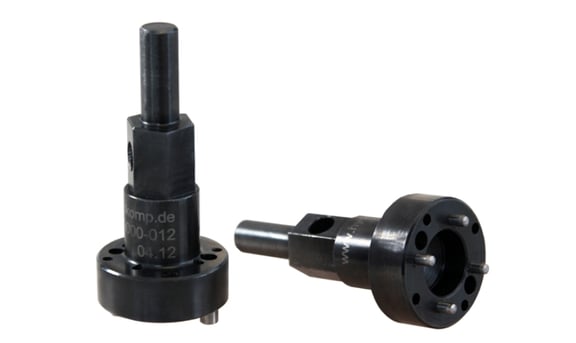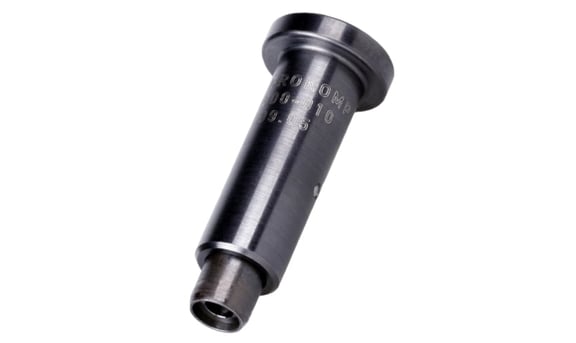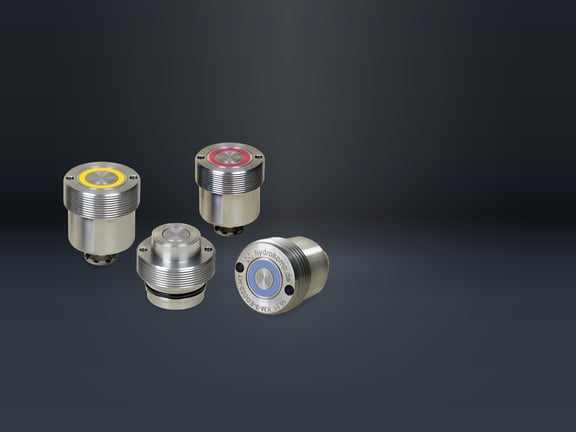
100-3 Coupling elements built-in/screw-in variants, nominal sizes 3/5/8/12, "HT" up to 200°C
HYDROKOMP coupling elements are made of stainless materials. This means they can be used for all fluids and gases that are not aggressive. Special designs, e.g. for steam or other media, are available on request.
Info
HYDROKOMP offers two operating modes, only "unpressurized couplings" or "pressurized couplings".
The pressureless couplable elements may be coupled under pressure up to 25 bar if the specified volume flows are not exceeded. At higher pressures, there is a risk that high fluid flow velocities will destroy the soft seal in the non-return valve. This means that when coupling air up to 10 bar, the pressureless couplable elements should always be used, even when coupling under pressure.
The elements that can be coupled under pressure may be coupled on one and/or both sides up to the maximum specified operating pressure.
The plug-in versions are particularly suitable for panel mounting in multiple clamping systems. Screw-in elements can be screwed directly into the fixture body, e.g. of a quick-change system. There they are ideal as an interface for media transfer.
The pressureless couplable elements may be coupled under pressure up to 25 bar if the specified volume flows are not exceeded. At higher pressures, there is a risk that high fluid flow velocities will destroy the soft seal in the non-return valve. This means that when coupling air up to 10 bar, the pressureless couplable elements should always be used, even when coupling under pressure.
The elements that can be coupled under pressure may be coupled on one and/or both sides up to the maximum specified operating pressure.
The plug-in versions are particularly suitable for panel mounting in multiple clamping systems. Screw-in elements can be screwed directly into the fixture body, e.g. of a quick-change system. There they are ideal as an interface for media transfer.
built-in

screw-in
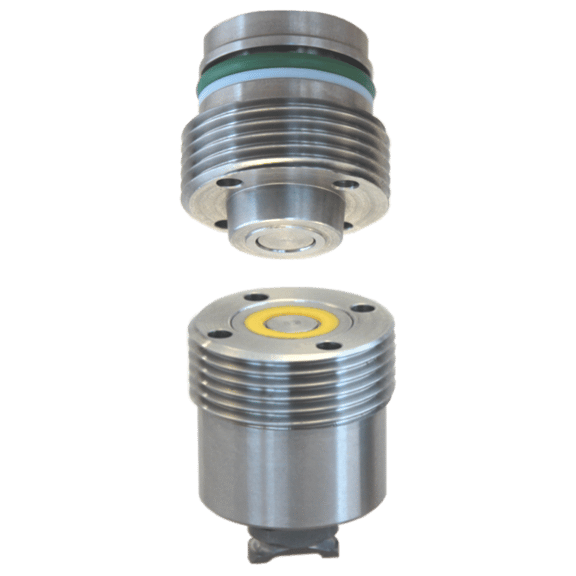
top clutch nipple, bottom clutch mechanisms
Special features:
- Stainless materials and replaceable system seals
- Ideal for space-saving installation in individual housings
- for transferring liquid/gaseous media and vacuum
- Can be coupled without pressure or under pressure
- Wide range of variants with four nominal widths
- Standard elements and special elements available
- HT variant Operating temperature up to 200°C NEW!
| Nominal size: | 3, 5, 8 and 12 |
|---|---|
| Operating pressure: | pmax. 250 - 500 bar |
| Flow rate: | 8, 12, 25 and 50 l/minute |
| Dome stroke: | 4.5 , 7, 10 mm |
| Coupling force: | at least 94, 98, 169 N (at 0 bar) |
| Variant: | Push-in and screw-in variants |
| Coupling method: | unpressurized or pressurized coupling |
| Medium | Liquid, gaseous media and vacuum |
Functional principle:

The coupling nipple and coupling mechanism are coaxially opposite each other before the coupling process. If the coupling nipple and coupling mechanism are coupled together and are under pressure, a coupling force acts between them. The coupling force must be absorbed externally in a force-fit or form-fit manner.
The face-side, axially acting sealing surfaces of the coupling elements must be protected against contamination. Good results can be achieved by rinsing and then blowing off with air. The mechanics are sealed at the bottom of the locating bore.
A = Uncoupled condition
B = coupled condition
C = Coupling nipple
D = Coupling mechanism
E = Coupling stroke
F = Axial position tolerance
design variants:
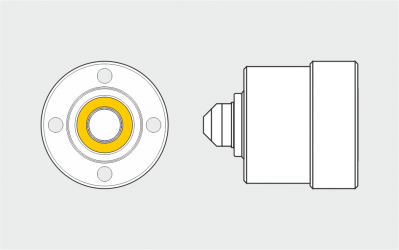
Nominal sizes: 3, 5, 8 and 12
Coupling method:
- can be coupled under pressure
(yellow system seal) - can be coupled without pressure
(system seal red)

Nominal sizes: 3, 5, 8 and 12
Coupling method:
- can be coupled under pressure
- can be coupled without pressure

Nominal sizes: 3 and 5
Coupling method:
- can be coupled under pressure
(yellow system seal) - can be coupled without pressure
(system seal red)

Nominal sizes: 8 and 12
Coupling method:
- can be coupled under pressure
(yellow system seal) - can be coupled without pressure
(system seal red)

Nominal sizes: 3, 5, 8 and 12
Coupling method:
- can be coupled under pressure
- can be coupled without pressure




